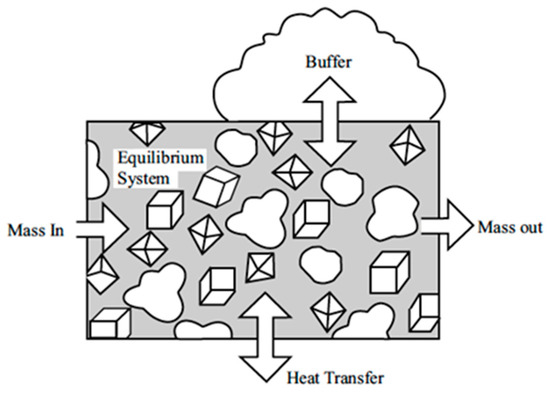The geochemical computer model is an important innovation that exponentially evolved in the last decades, and that now plays a vital role in several areas of study, ranging from developing new models for surface complexation, reactive transport models, or the generation of thermodynamic data used to simulate or predict solubility reactions. An important application of geochemical modeling involves supporting the explanation or characterization of engineering systems related to waste management, wastewater reuse, evaluation of water quality from a landfill, metal speciation within soils in industrial areas, new technologies or process for waste treatment, and even the evaluation of the potential to use solid wastes in carbon sequestering processes.
- geochemical modeling
- reactive transport
- groundwater
- leachate
1. Introduction
In recent decades, it is notorious the increasing number of software, databases, training and a prominent a variety of applications of geochemical modeling around the world. Geochemical modeling has found applications ranging from (i) leaching behavior of solid, to (ii) the removal of heavy metals from natural waters, to (iii) the long-term durability of building materials, to (iv) geological sequestration of carbon dioxide, among others.
In many research areas, geochemical modeling software (main software and databases mentioned in the reviewed papers are listed in Table 1).
Table 1.
Main software and databases related to Geochemical Modelling.
|
Software/Database |
Product description |
Reference* |
|
Visual MINTEQ |
“freeware chemical equilibrium model for the calculation of metal speciation, solubility equilibria, sorption etc. for natural waters” |
https://vminteq.lwr.kth.se/ |
|
PHREEQC |
“designed to perform a wide variety of aqueous geochemical calculations. Implements several types of aqueous models including two ion-association aqueous models” |
https://www.usgs.gov/software/phreeqc-version-3 |
|
GWB (The Geochemist's Workbench) |
“Integrated set of interactive software tools for solving a range of problems in aqueous chemistry” |
www.gwb.com |
|
LeachXSTM |
“Saturation indices of potentially solubility controlling minerals in soil, sediments, wastes and construction materials can be calculated with geochemical modelling environment ORCHESTRA embedded in LeachXS” |
http://www.leachxs.com/ |
|
AQUACHEMTM |
“groundwater software package for anyone working with water data, and is suited for projects requiring management, analysis and reporting of water quality data” |
https://www.waterloohydrogeologic.com/aquachem/ |
|
ORQUESTRA |
“simulate chemical speciation and reactive transport processes” (Objects Representing CHEmical Speciation and TRAnsport ) |
http://orchestra.meeussen.nl/ |
|
CHESS (Chemical Equilibrium of Species and Surfaces) |
“developed to simulate the equilibrium state of complex aquatic systems, including oxides or minerals, organics, colloids and gases” |
http://chess.geosciences.mines-paristech.fr/home |
|
HYTEC |
“Module-oriented modeling of reactive transport. HYTEC evaluates the groundwater flow paths, and simulates the migration of mobile matter (ions, organics, colloids) subject to geochemical reactions” |
http://swmath.org/software/11520 |
|
EQ3/6 |
“package for modeling geochemical interactions between aqueous solution, solids, and gases, following principles of chemical thermodynamics and chemical kinetics.” |
https://www.osti.gov//servlets/purl/1231666. |
|
CEMDATA |
database “specifically for hydrated Portland, calcium aluminate, calcium sulfoaluminate and blended cements, as well as for alkali-activated materials, and includes thermodynamic properties determined from various experimental data published in recent years” available on PHREEQC software. |
https://www.empa.ch/web/s308/thermodynamic-data |
|
MINTEQA2 |
“equilibrium speciation model that can be used to calculate the equilibrium composition of dilute aqueous solutions in the laboratory or in natural aqueous systems” |
https://www.epa.gov/ceam/minteqa2-equilibrium-speciation-mod |
|
WHAM (Windermere Humic Aqueous Model) |
“simulates the chemical reactions that occur when metals enter soil and water systems. It investigates how metals bind to humic substances” |
https://www.ceh.ac.uk/services/windermere-humic-aqueous-model-wham |
*Sources: Referenced websites.
2. Modeling
The modeling of mass transfer in groundwater, known as reactive transport modeling, analyzes solutes carried by water flow through the soil. Transport modeling, via molecular diffusion and hydrodynamic dispersion, is thus combined with reaction modeling [1]. The flow of liquids through the porous media can be mathematically described using transport equations derived from the conservation of mass principle and taking into account hydraulic conductivity, which is related to the permeability of the soil and viscosity of the liquid, while reaction models consider thermodynamic equilibrium calculations to predict the distribution among species and minerals (Figure 1). Landfill leaching is a classic example of contaminant transport through soil media, which is controlled by advection (bulk motion), dispersion (turbulent diffusion with velocity gradients) and sorption in a reaction model.

Related to municipal solid wastes (MSW), the main applications of geochemical modeling have been to: (i) optimize remediation efforts; (ii) identify parameters of importance in groundwater systems; (iii) design effective techniques to retard the release of hazardous materials to groundwater; (iv) bridge the gap between laboratory experiments and field data; and provide long-term environmental assessment of waste applications.
